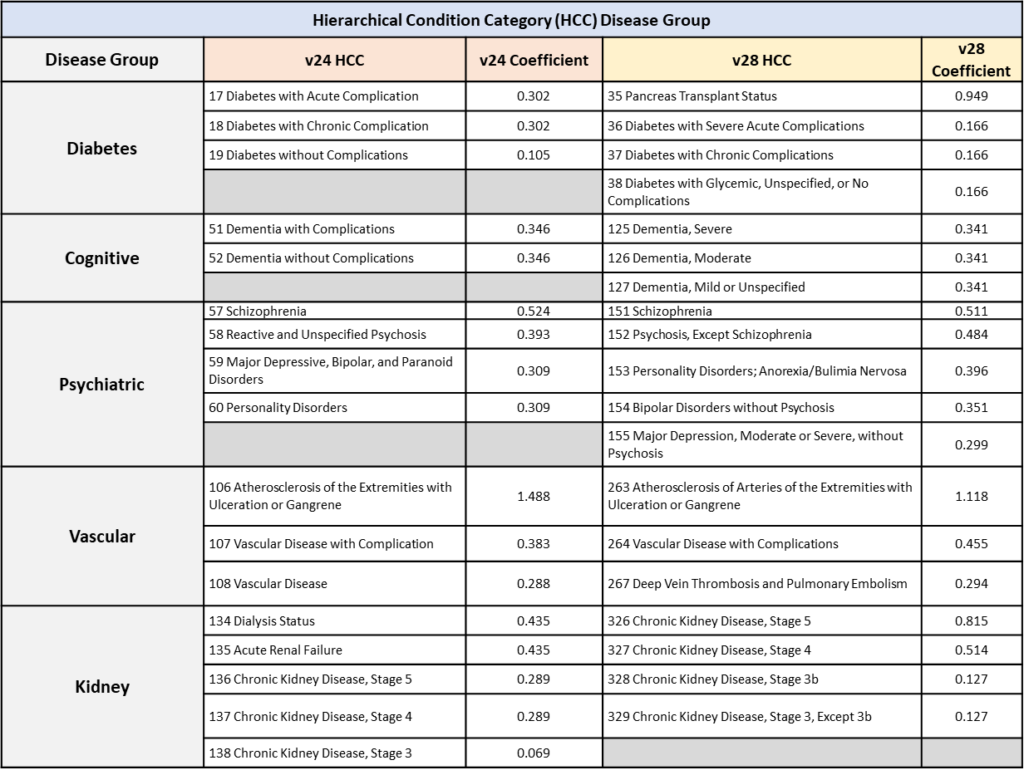
The Centers for Medicare & Medicaid Services (CMS) regularly updates its risk adjustment models to reflect more recent utilization and cost patterns. CMS recently finalized the 2024 Proposed Part C Risk Adjustment Model, which is retrospectively effective for all 2023 dates of service. Depending on a beneficiary’s combination of diagnoses or clinical profile, beneficiary or plan average risk scores may change.
The 2024 Proposed Part C Risk Adjustment Model includes important technical updates, including many restructured condition categories. Condition categories were added, deleted, revised, and underlying FFS data years updated. Other modifications include revisions to conditions subject to more coding variation.
This revised model will phase in over 3 years, and CMS will blend CY 2024 risk scores using 67% of the risk scores under the current 2020 (v24) risk adjustment model and 33% of the risk scores under the finalized 2024 (v28) risk adjustment model. A comprehensive list of changes can be found by visiting: https://www.cms.gov/files/document/2024-announcement-pdf.pdf and https://www.cms.gov/newsroom/fact-sheets/fact-sheet-2024-medicare-advantage-and-part-d-rate-announcement.

* The total number of ICD-10 diagnosis codes varies by fiscal year.
Depending on a beneficiary’s combination of diagnoses or their clinical profile, risk scores may change. The table below provides examples of the differences between the current model and the 2024 (v28) CMS-HCC model.
The HCC risk adjustment coefficients are for continuing enrollees, community, nondual, aged beneficiaries.

About the Author


